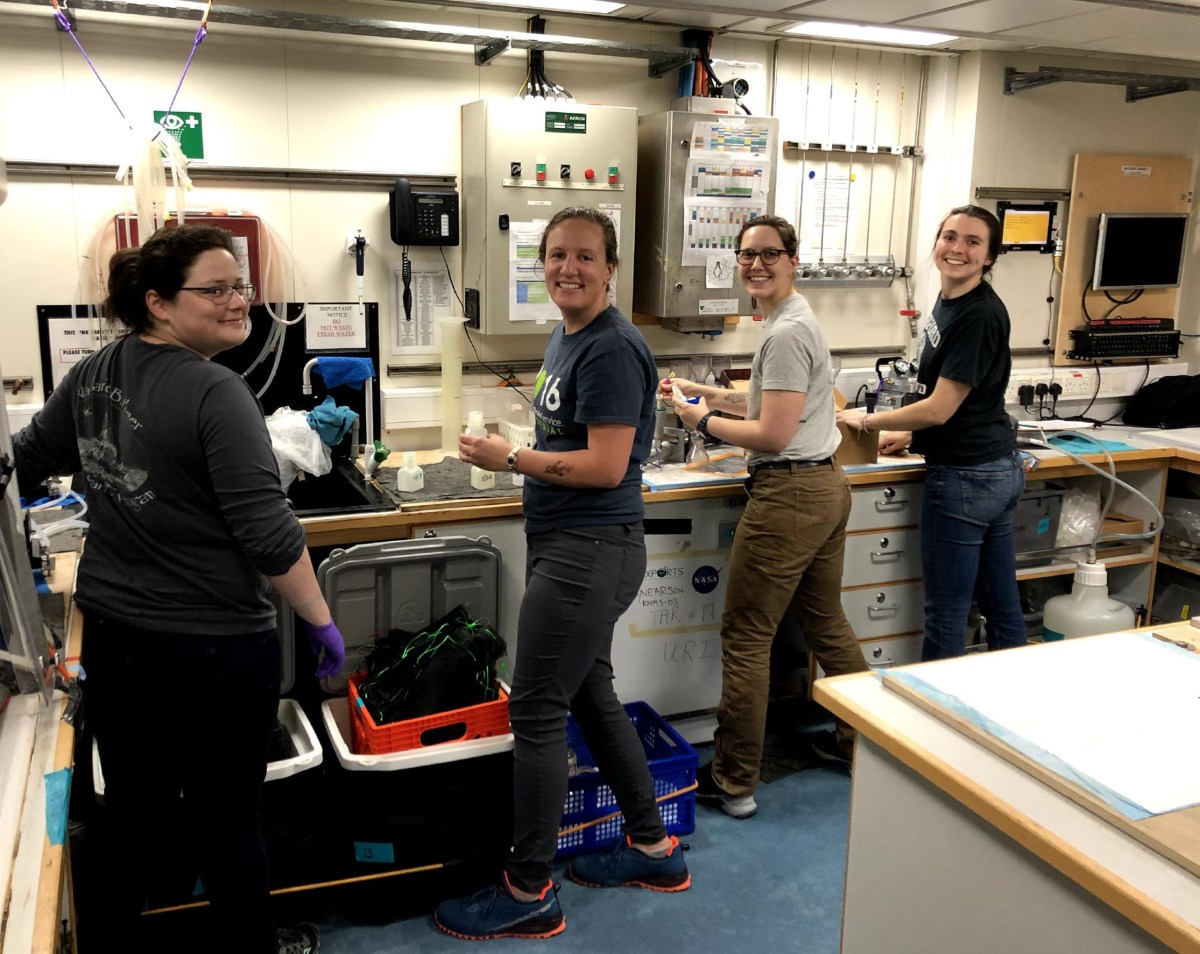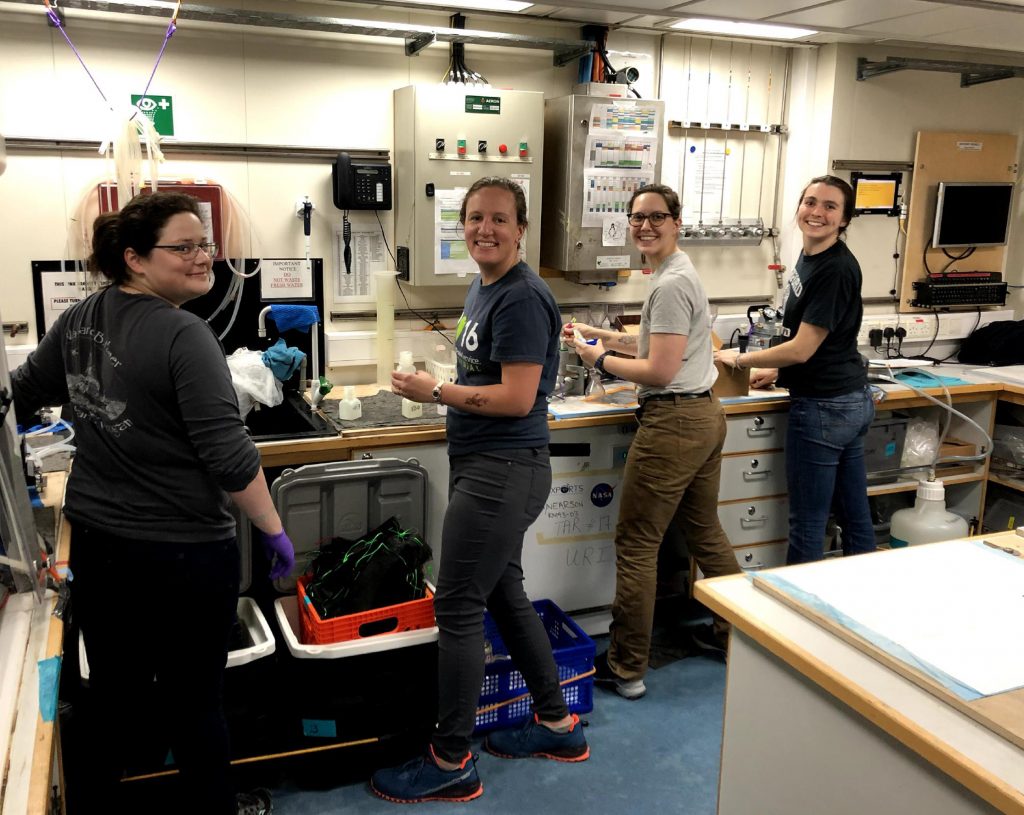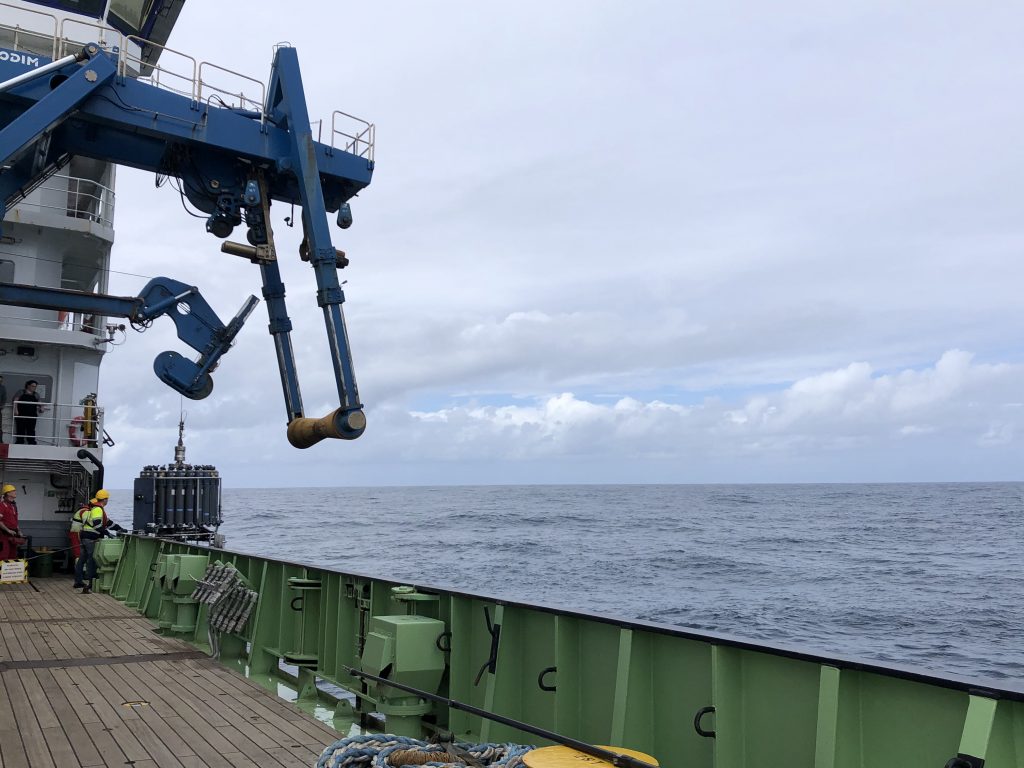By Shawnee Traylor, PhD student in the joint Massachusetts Institute of Technology and Woods Hole Oceanographic Institution program in Chemical Oceanography / NORTHERN ATLANTIC OCEAN /
Satellites have undoubtedly opened up new ways for scientists to study the ocean, giving us global coverage of the surface of the ocean without ever having to step foot on a ship. But how can we learn what lies beneath the surface?
The classic way oceanographers study the ocean is, of course, going there. But putting together a cruise is no easy feat. They take years of planning, preparation, and enormous teams of scientists, mariners, and logistics personnel to bring to fruition. Once aboard, teams must adapt to perform delicate tasks under the demanding conditions of working at sea. Some cruises (such as this one!) run into storm after storm, which limits the ability to conduct our ship-based scientific missions.

The difficulty of science at sea has been one driving factor in the development of autonomous platforms for use in scientific research. The wide range of platforms allow us to study places and timescales that are inaccessible to ships–such as the physics of water under ice sheets, or the interannual variability of biogeochemical cycles now and into the future.
The EXPORTS campaign utilizes a range of autonomous assets to collect data over time and space, and at different depths. Gliders silently soar through the water to waypoints provided by pilots on land, collecting measurements down to 3,281 feet (1000 meters) several times a day. Autonomous floats such as the Biogeochemical Argo float shown in the photo below remain in the ocean for up to five years, gathering critical data as they drift in the ocean’s currents. Drifters deployed at the surface give insight to the upper ocean currents. Like satellite imagery, these assets allow us to make informed decisions while at sea by scouting out the biology, chemistry, and physics of a region without having to move the ship. The assets that remain in the water after the cruise continue our study and give further context to our ship-based measurements.

Each type of platform carries a unique sensor package, though most of them measure temperature, salinity, and depth. The floats and gliders utilized in the EXPORTS cruise also include a suite of biogeochemical sensors that measure oxygen, bio-optics, and nitrate. The bio-optical package measures things like chlorophyll, a proxy for the abundance of phytoplankton, and backscatter, which is used to study particles in the water that may be important to carbon export.
On this cruise, I was tasked with deploying two BiogeochemicalArgo floats, to both inform our mission while at sea and enable us to continue our study of the region after we return home. Similar to gliders, these floats move through the water column by finely tuning their buoyancy by moving mineral oil between internal and external bladders. When it is time to take measurements, they sink down to 6,561 feet (2,000 meters) and begin gathering data on their way to the surface, constructing a profile of the water’s properties. Once at the surface, they transmit this data back to servers on land via satellite, who process and send it back to the team on the ship.

We deployed the floats in the first few days of the cruise, transiting over the first drop point at 4:30 AM. The brisk early morning air stole any lasting grogginess from my eyes as I grabbed a drill and opened their wooden crates. I hooked two alligator clips onto the head of the float and successfully made communication, waking it from its slumber. After a few final pre-deployment checks, it was the moment of truth. My fingers hovered above the keyboard, ripe with the responsibility of ensuring a successful deployment. One final keystroke activated the float, and it was time to release it into the vast black waves. How I wished for a blinking light, the purr of a motor, or any sign of life. But it stood silent. I had to trust that once we released it overboard, it would rise once again.




















